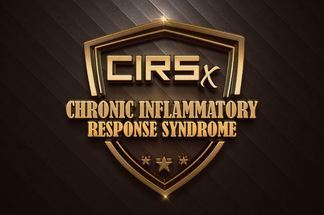The Invisible Disease

Keith Berndtson, MD
Chicago, Illinois
A well-documented illness is evading detection by thousands of doctors every day throughout the United States. Confronted with hard-to-explain multisystem illnesses, these doctors seem bent on seeing whatever it is they believe even when the facts don’t fit.
Many sufferers of this illness are given conflicting diagnoses by a trail of specialists. Their treatments don’t work and often make the patient feel worse—all at great expense.
Some are told that they’re fine. Others are told that no treatment is warranted or that it’s all in their heads. Rude dismissals by big-headed experts adds salt to their wounds.
In their defense, the doctors will say that they’re following evidence-based guidelines. Never mind that the guidelines (if they actually existed) were biased, opaque, or dim. Little seems to stop revenue-hungry doctors from performing useless procedures.
With the pockets of these suffering health care consumers cleanly picked, the specialist is ready to rout the patient back to the harried gatekeeper who made the referral. Expected to see twelve patients before and after lunch, the gatekeeper’s goal is to get from room to room quickly. There’s no time for reasoning through the complexity of an unexplained case, but there’s always time to make another referral.
This not so merry-go-round bounces the patient between varied silos of medical expertise. Some sufferers make the journey to a topnotch name institution only to discover that their illnesses remain invisible even to the demigods of the profession.
Soon will come a sweeping change that finds doctors and hospitals being paid not for what they do, but for the value they create. When this happens, the logic used to evaluate and manage unexplained forms of chronic illness will shift as well, toward creating even less value for those who suffer from multiple unexplained symptoms.
How can this be? Follow the money. In the new world order of accountable care, physician and hospital executive bonuses will depend on how much less cash they burn through for medical procedures, marketing, capital improvements, and so on. Suddenly, formerly reimbursed services won’t seem so medically necessary.
Instead, evidence will be found to justify the procedural minimalism needed for accountable care organizations to stay afloat. Patients with unexplained multisystem illnesses will keep bouncing from one specialty to the next. Cash will burn and yet no value will be created. Suffering will increase.
When a health care system is not functioning well, it can only mean one thing: put more pressure on the gatekeepers. They’ll be held to guidelines that insist such patients are either depressed, somatizers, or malingerers. To give these patients the benefit of the doubt, each will be offered a generic antidepressant or some newfangled psychiatric nostrum. When that doesn't work, they’ll be passed to the team psychologist for brief cognitive behavioral therapy. When that doesn't work, they may get discharged from care for being non-cooperative.
These new world care teams will claim the moral high ground. Those who question their definition of accountability will be deemed unAmerican. They’ll brandish the “evidence-based” catchphrase like a club to beat down divergent thinkers, even as they hemorrhage cash on wasted workups that miss and mistreat the invisible illness.
Clinical wisdom has no place in a health care system that discounts complexity. When it comes to unexplained multisystem illness, evidence-based guidelines and productivity targets put physicians in a corporate structure that’s programmed to fail. Patients will continue to suffer from illnesses that remain invisible to doctors who can't find what they’re not allowed to look for.
The invisible disease is in plain sight to physicians who know what they’re looking for. It’s a chronic inflammatory response syndrome caused by exposure to various forms of toxic air found in water-damaged buildings (CIRS-WDB). One in four (80 million) Americans are genetically susceptible to CIRS. How many are exposed is unknown. Estimates vary between 4 and 40 million Americans. That equals 40 to 400 stadiums filled with 100,000 people. Think about that.
In the “get paid for what you do” medical center ecosystem, doctors and hospitals are paid to miss the invisible illness. In the “get paid by how much less cash you burn” ecosystem, missing the invisible illness will not go so well.
CIRS-WDB is also a bellwether for a much more dangerous invisible illness that affects our species as a whole. We’re stuck in a pattern of thinking that says it’s okay to plunder and pollute our way to prosperity. Under the radar, chemicals we’re spewing into the environment are causing genetic mutations in microbial species. Some of these mutations produce never-before-seen biotoxins.
Mix the new biotoxin generators with the water damage being caused by Big Weather around the world and you get an idea of the massive problem we have on our hands. Yet you wouldn’t know it by the plunder and pollute business-as-usual attitude that prevails in most industries and in our financial, political, and health care institutions.
The good news is that thanks to the detective from Pocomoke, we have a solution for the vast majority of people suffering from CIRS. (1,2) With your help, the community that’s developing with the help of this website may find a collective voice loud enough to stop this madness.
The bad news is that we have no solution for our problems as a species —and likely won’t find one until our definitions for concepts like industry, politics, and prosperity demand accountability to personal health and global sustainability.
Just as health care systems are not good stewards of patients with an invisible illness, our institutions are not good stewards of people, societies, and ecosystems that are suffering from an invisible multisystem illness.
Imagine the species of the world convening a conference on what to do about the human problem. Many counsel patience, since humanity may be growing too ill to keep plundering and polluting so much. Others called for more aggressive action, arguing that humanity isn’t just fouling its own nest; it’s fouling everybody’s nest at a pace that is bound to increase. They finally decided to let ticks, mosquitoes, and molds lead the charge, arguing that if any human institution is too dazed and confused to fight back right now, it’s medicine.
References:
-
Shoemaker RS, House D, Ryan JC. Vasoactive intestinal polypeptide (VIP) corrects chronic inflammatory response syndrome (CIRS) acquired following exposure to water-damaged buildings. Health. 2013;5(3):396-401. http://bit.ly/1nd2upm
- Shoemaker R, House D. Sick building syndrome (SBS) and exposure to water-damaged buildings: Time series study, clinical trial and mechanisms. Neurotoxicology and Teratology 2006; 573-588. http://www.ncbi.nlm.nih.gov/pubmed/17010568
Featured Resources for Community
Shoemaker Protocol™ Quick Start:
The 3 initial steps to determine if mold is affecting you One of the most common questions we hear is, “how do I know if I have mold illness?” Rest assured, if you’re asking this question, you’ve come to the right place.
AirOasis The #1 CIRS Spring Cleaning Hack
Specialized air purifiers are revolutionizing deep cleaning, no matter the season. They’re a game changer for remediation purposes, too.
CIRS Spring Cleaning Checklist
Living with CIRS means cleaning and maintenance efforts must be ongoing and up to CIRS-safe standards. Spring is a perfect time to do a thorough examination and cleaning of the entire home and create a schedule for the year ahead.
CIRSX Annual Conference June 5-8, 2025 in Tempe, Arizona!
Early Bird Discount ends March 7!
NEW EPISODE! Dr. Shoemaker on Episode #211 of the BetterHealthGuy Podcast!
New Episode! Dr. Shoemaker joins Scott on the BetterHealthGuy.com podcast to talk about the use of GENIE testing in Chronic Inflammatory Response Syndrome.
Related Resources for Community
- Surviving Mold Podcast -Episode 1 with Dr. Karen Johnson
- State of the Art Conference of CIRS-2 planning is picking up steam!
- Our Newest Certified Physician- Margaret DiTulio
-
CHRONIC INFLAMMATORY RESPONSE SYNDROME SHOEMAKER TREATMENT PROTOCOL SCIENTIFIC SUPPORT

- My Name Is Erik Johnson
- Dr. Shoemaker Interview with Lyme Disease Association of Australia
- FAQ Video #4: Exercises and Capillary Hypoperfusion




